Weapons from the Revolutionary War played a critical role in the tactics that were used and the types of units that were raised.

While the Americans, British, and French all had similar weapons, there were a few differences.
Weapons also varied depending on the unit. Infantry weapons were obviously different than artillery weapons or those that were used in the cavalry.
Jump to:
List of Infantry Weapons
Each nation had its own way of crafting weapons and its own innovations. Some would play a small role in the Revolution but take on a greater role in later wars.
Muskets and Rifles
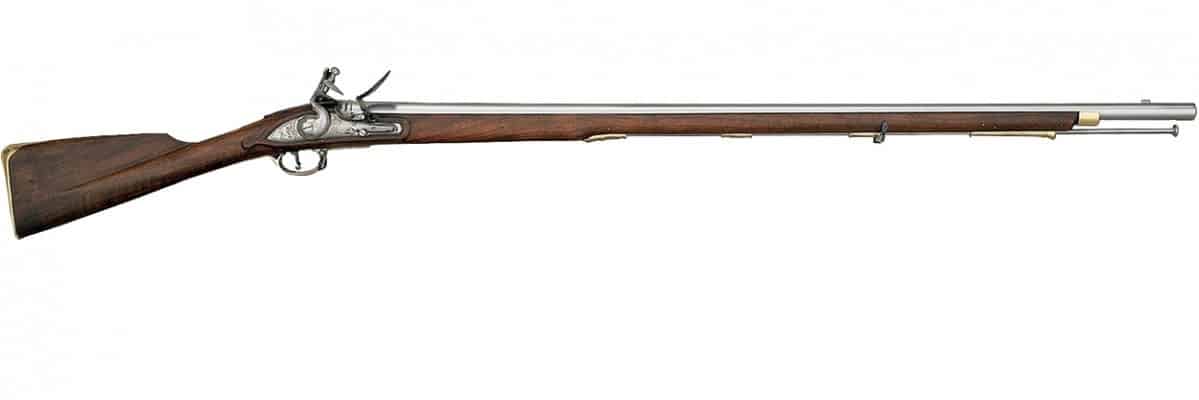
Brown Bess: The Brown Bess was a muzzleloading smoothbore musket and one of the most common weapons from the Revolutionary War. While it originated in Great Britain and was a British weapon, it was the primary musket used by the Americans. Considering that the colonists were former British subjects, it makes sense.
Also Read: 30 Famous Battles of The Revolutionary War
The musket was used to fire a single shot ball or a cluster-style shot, which fired multiple projectiles, giving the weapon a "shotgun" effect.
There were two variations of the Brown Bess:
- Short Land Pattern: was shorter, less bulky, and less heavy.
- Long Land Pattern: longer and was more common than the Short Land Pattern.
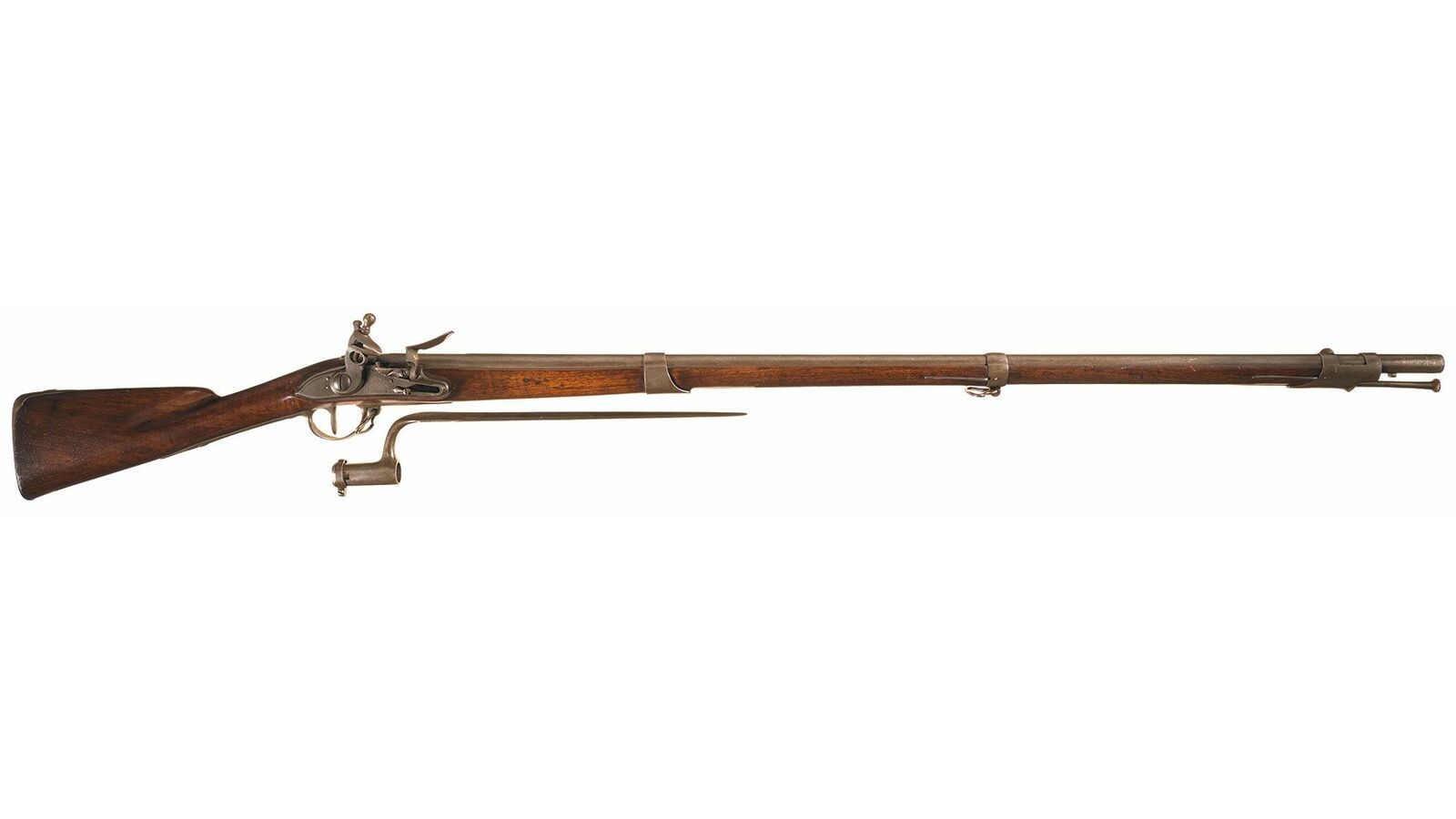
Charleville Muskets: Due to the influence of Marquis de Lafayette, the Charleville Model 1763 and 1766 muskets were imported to America even before the French Alliance.
The Charleville would influence the Springfield Musket of 1795.

American-Made Muskets: The infant country commissioned many gunsmiths to make muskets for the Continental Army. These muskets became known as "Committee of Safety" muskets because the musket often did not bear the maker's name.

Pattern 1776 Rifle: The Pattern 1776 infantry rifle was built by William Grice and was based on German rifles in use by the British Army during its time.
About 1,000 of these were built and used by the British Army. The rifle was given to light companies of regiments in the British Army during the American Revolution. The Gun is .62 Calibre with a 30.5-inch barrel

Long Rifle: One of the most controversial weapons from the Revolutionary War. It was much more accurate than the Musket but had a longer reload time and could not be fitted with a bayonet.
George Washington did not like the use of the rifle, but its effectiveness at Saratoga and the Battle of Cowpens could not be denied.
It took men like Daniel Morgan to create effective tactics for its use.
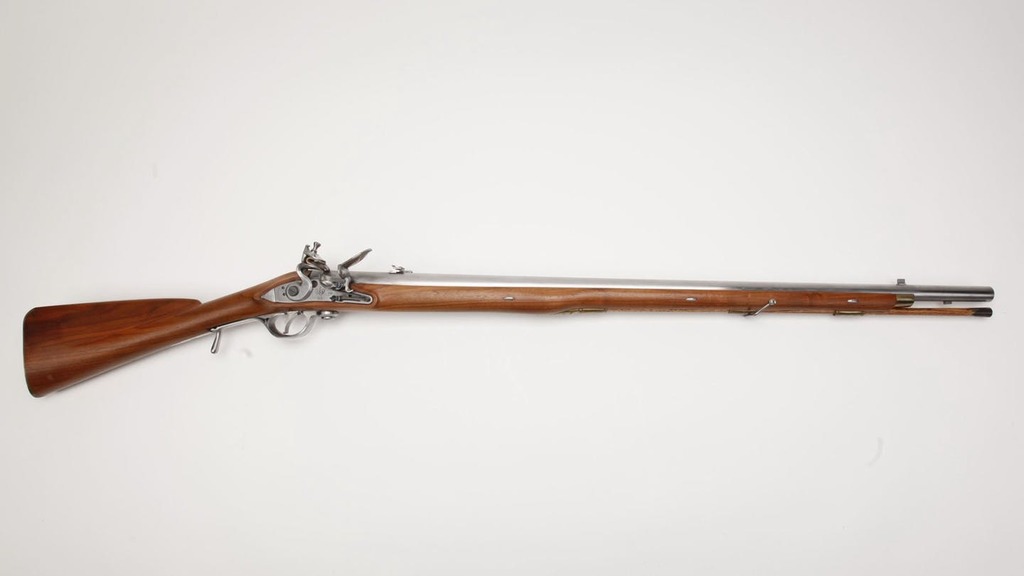
Ferguson Rifle: It was the first breech-loading rifle to be adopted by the British military. However, they were more expensive to produce and, as a result, could not be produced for the entire army.
The rifle was the creation of Patrick Ferguson and had an accurate range of approximately 100 yards with a 3-4 inch accuracy. It loaded much faster than the musket and could be loaded in the prone position.
After Ferguson was mortally wounded at the Battle of Kings Mountain, the rifle was no longer produced.
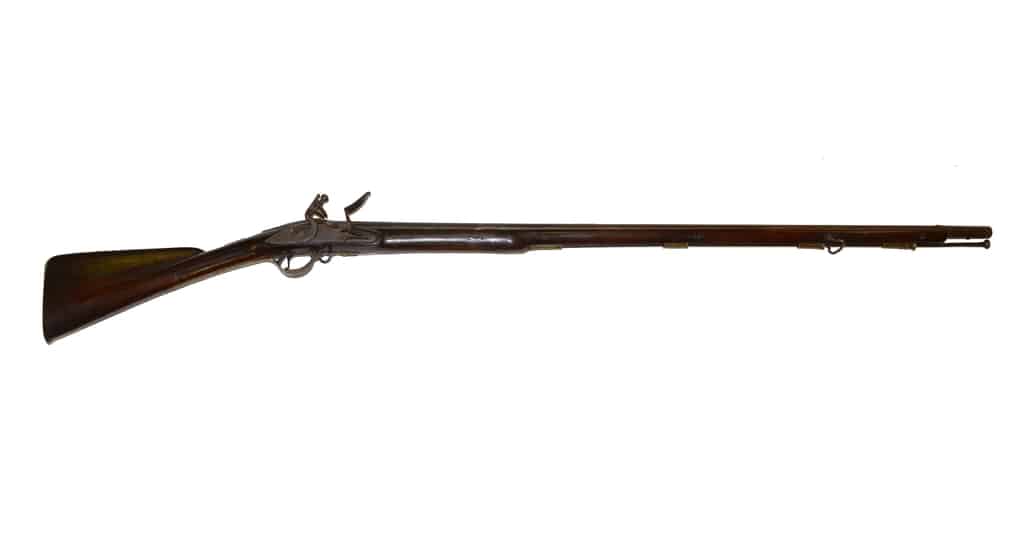
Fusil: Rifles carried by British officers. They were lighter and more accurate than muskets.

Bayonets: The Bayonet was fitted to the musket and aided the soldiers in close combat.
The bayonet was a crucial weapon in the Revolutionary War. Due to the inaccuracy of the musket, the bayonet charge was used frequently. This triangular-shaped blade would leave a large, easily infected wound on the victim.
Most units on both sides of the fighting used the bayonet.
Pistols and Small Arms
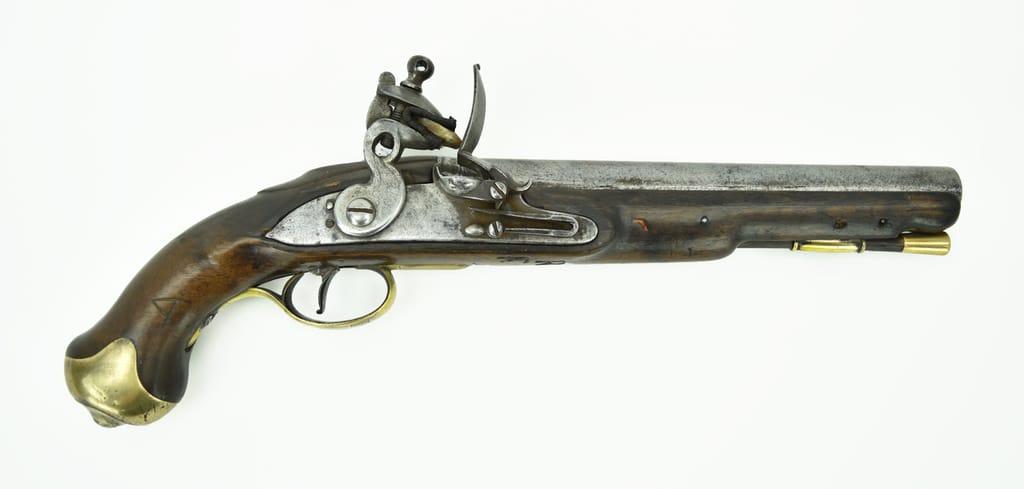
Light Dragoon Pistol: Issued to British Dragoons and used throughout the American Revolution. It was used as a quick-moving battlefield sweeper.
This .67 caliber smoothbore flintlock pistol was made for the Light Dragoons. It has brass furniture, a pin-fastened stock, a single ramrod pipe, a wooden ramrod with a swelled tip, and a raised beavertail carving on the stock around the tang.
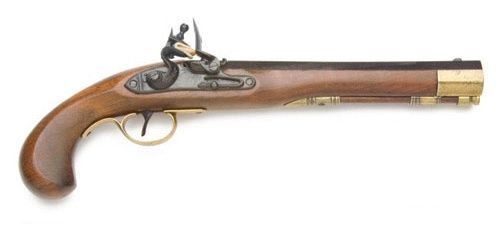
Kentucky Flintlock Pistol: An American pistol that was similar to the Light Dragoon Pistol the British used. Often issued to American cavalry and officers.
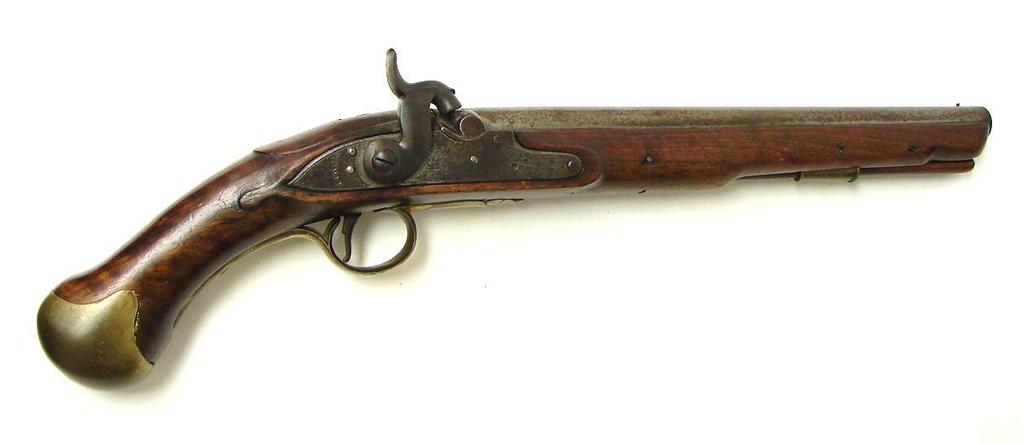
Sea Service Pistol: Standard issue to British Navy personnel.
The sea service pistols saw extensive use during the French and Indian War, the American Revolution, and the Napoleonic Wars.
During the 1790s, the barrel was shortened to 9 inches, making it more convenient in the tangled mêlées experienced by boarding parties.
The shortened version is often referred to as the East India Co. Sea Service Pistol because they were the first to shorten it.
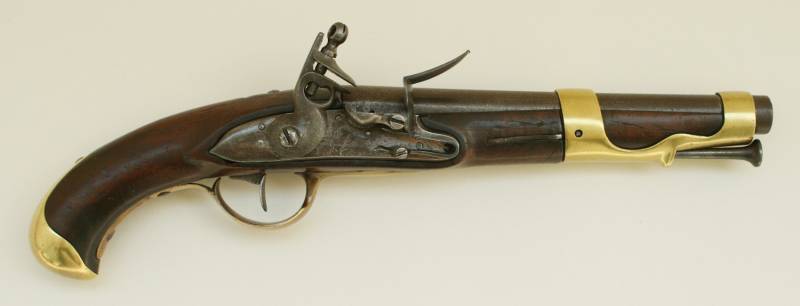
Modele 1763 Pistol: French issued pistols to officers and cavalry. Similar to the British Light Dragoon Pistol.
Close Range Weapons
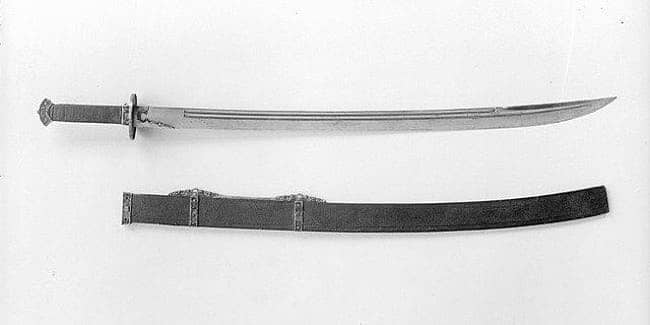
Swords/Sabres: Used on all sides by officers and cavalry. Effective in close combat.
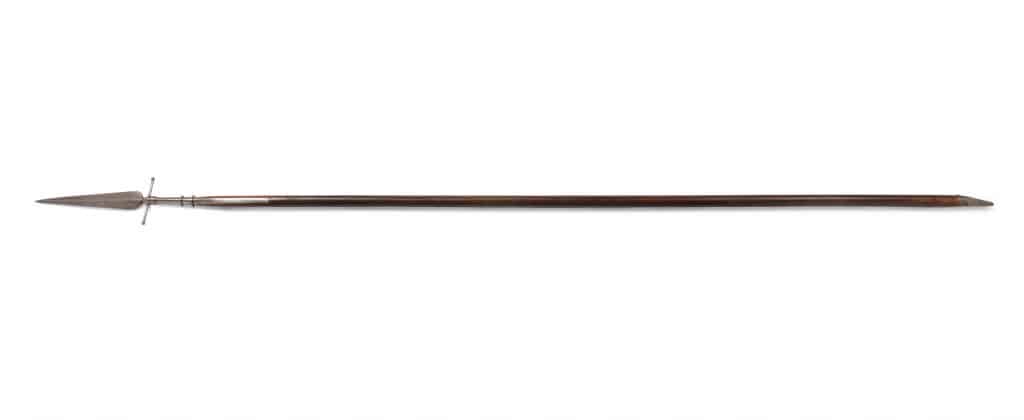
Spontoon: A pike-like weapon carried by officers and sergeants on both sides. The spontoon was used for close-quarters combat and for rallying troops.
After the pike was replaced by the musket as the primary weapon carried by foot soldiers, the spontoon remained in use as a signaling weapon.
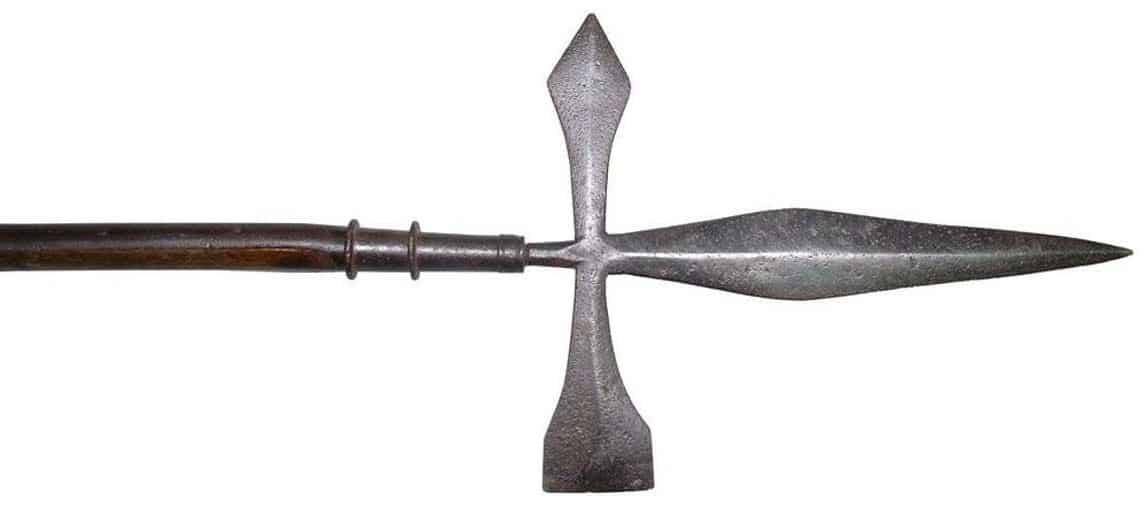
Halberd: Similar to the spontoon and carried by British sergeants for signaling.
The Halberd is responsible for many British officer casualties as it served as an easy mark of an officer for an American sniper.
Native American Weapons
Native Americans also used muskets, but these are two weapons uniquely tied to them.

Bow and Arrow: Used by Native Americans. These weapons allowed for quick, silent attacks. While the range was much less than a rifle, if the Bow was used by the right person, it was highly accurate and could be reloaded much quicker than many of the more modern weapons.
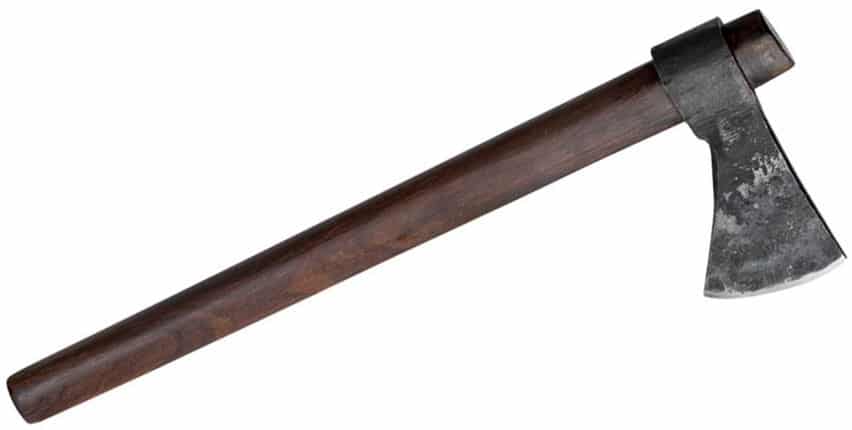
Tomahawk: Used by Native Americans and effective in close hand-to-hand combat. They could also be thrown at the enemy.
Artillery Weapons
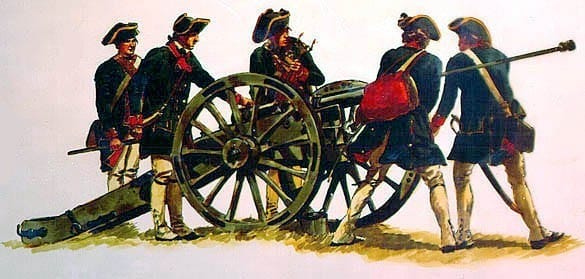
Cannons: They were used in the Revolutionary War by both armies were smoothbore, muzzle-loading guns and made of cast iron or bronze.
When fired, the recoil moved the gun backward, requiring it to be moved into position for the next shot. The guns ranged in size from 2-pounders to 42-pounders, a reference to the weight of the shot being fired.
These guns fired multiple types of projectiles, including solid shots, shells (hollow projectiles filled with gunpowder), canisters (metal projectiles filled with multiple smaller balls), and grapes (canvas bags containing lead or iron balls).
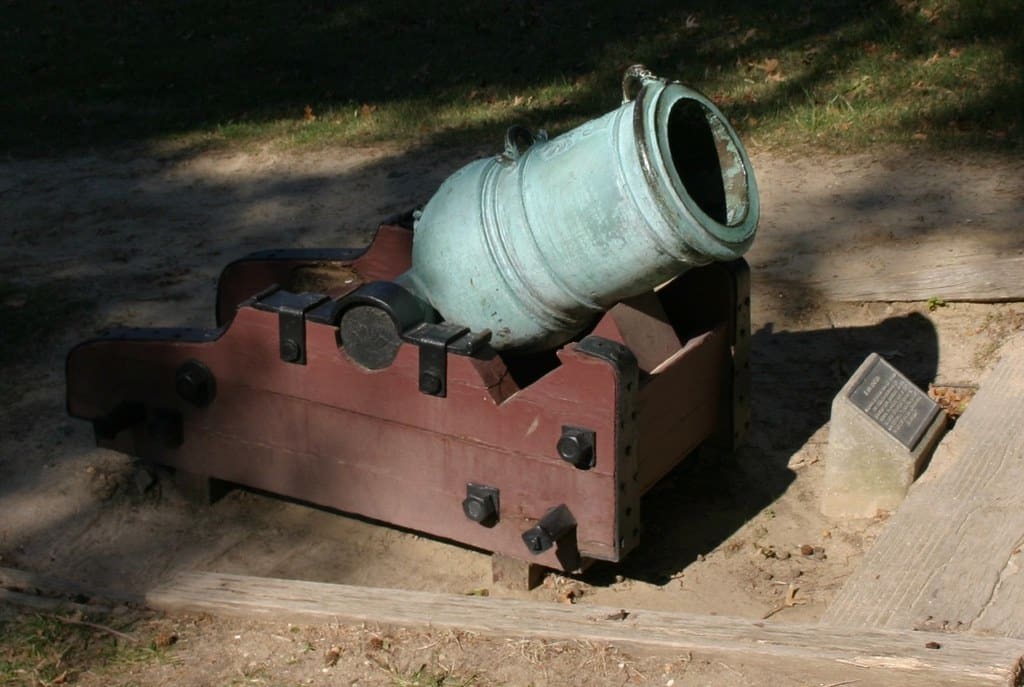
Mortars: They differed from cannons in both appearance and firing principles. A mortar was mounted on a flatbed, resembling a large block of wood.
An elevating wedge raised the barrel, enabling the mortar to fire an exploding shell, called a "bomb," in a high trajectory.
Fired properly, the bomb would fly over earthworks and explode while still airborne, raining shrapnel over the enemy

Howitzer: The howitzer combined the principles of both the cannon and the mortar. Mounted on a field carriage, the howitzer fired both bombs and cannonballs at a flat or high trajectory.
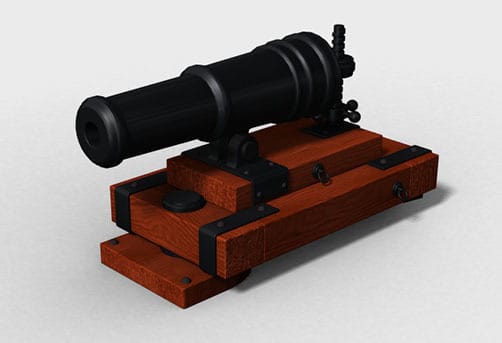
Carronade: A short, smoothbore cannon used during the American Revolution. Often fitted to privateer ships and British merchant ships.
Their range was limited and was generally used in close combat.
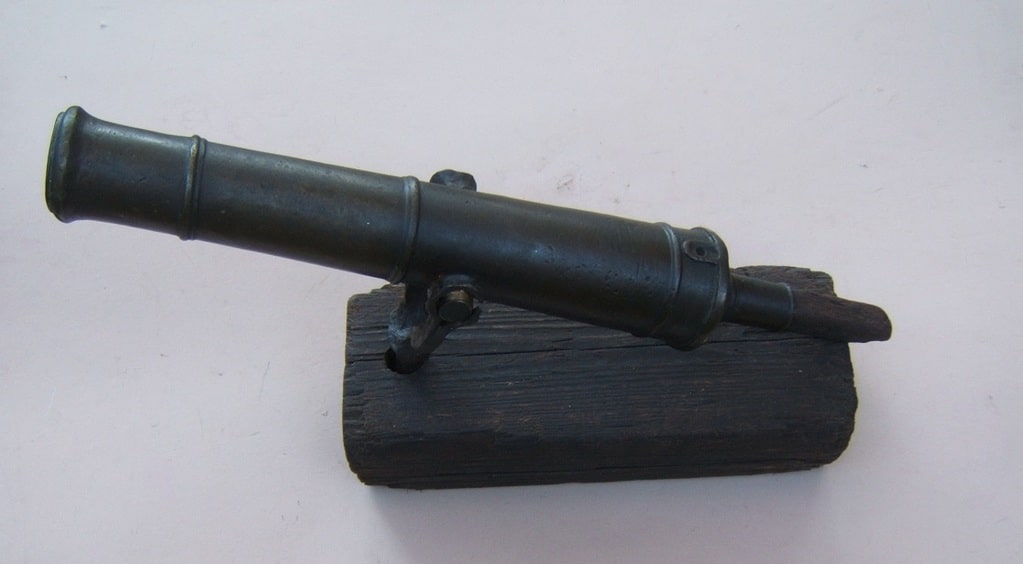
Swivel Gun: It was a small cannon mounted on a stand or fork that allowed it to easily “swivel” or turn to a wide range of targets.
In the Revolutionary War, they were used both on ships and on land as anti-personnel weapons.
Swivel guns typically fired grapeshot or other small caliber shots. While they were small caliber with a short range, they were most effective in facing an infantry attack or men attempting to forcibly board a ship at sea.
